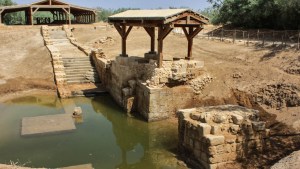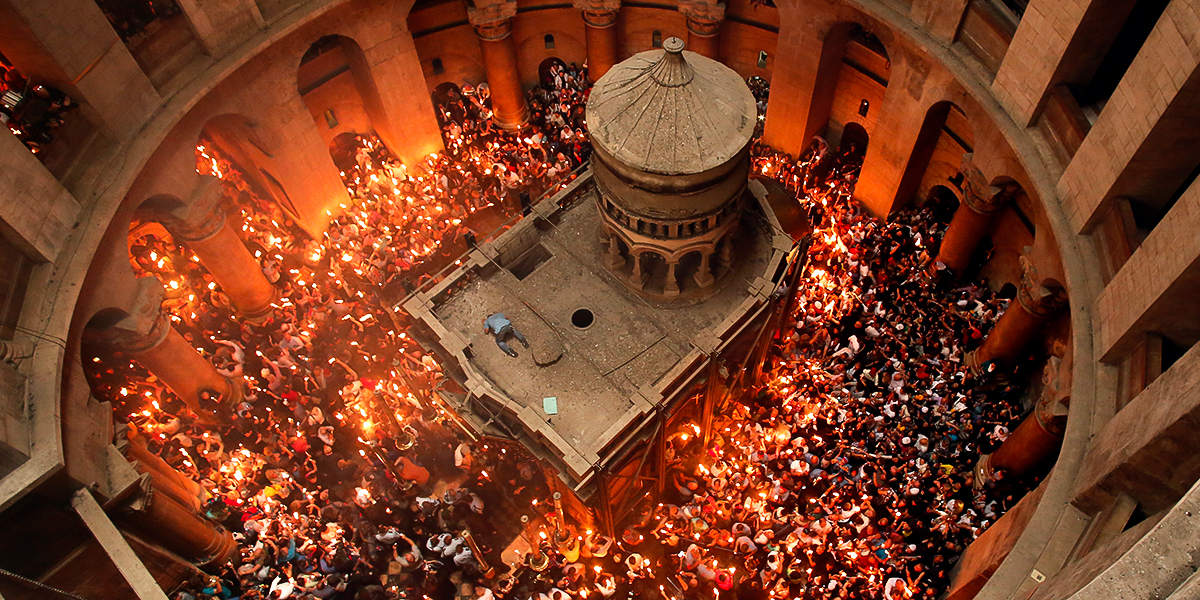The city of Jerusalem is home to some of many of the Catholic Church’s sacred sites, reflecting its history as the birthplace of Christianity. Known as the “Holy City,” it is a must-visit destination — so much so that every year it receives over 4 million tourists from all around the world. However, there are many more people who would love to visit, but haven’t had the chance to take the trip.
In order to make Jerusalem more accessible to everyone in the world, Aviad Betesh and Itamar Ben David developed a project that would open the city’s “virtual doors” wide open. In October of 2019 they launched the website called VR-Tours 360, which specializes in providing virtual tours of the most iconic places in the city. “This will make Israel accessible for people who could never travel here. That was the original idea,” Itamar said during an interview with Aleteia.

Read more:
Top 10 biblical destinations in Jordan
The difference between other digital options to see the city is that these tours are interactive. Itamar explained to Aleteia that he visits the places with one of their partners who carries a 360 camera. When they reach the place to be recorded he gives the tour as he would to a regular tourist, explaining everything they see and talking about the history of the site. “We walk into the different places the way I would guide you if you were here physically,” Itamar shares.
Once they have recorded everything, they process it and upload it. The 360 camera is what makes these videos special, because when you take the tour instead of watching a regular still video you can move around and change what you are watching. A 360 degrees video clip shows the photographed location from all angles, accompanied by the guide’s narration. On a computer you move the camera using your mouse, with a mobile device you move it using your finger on the screen or tilting your smartphone, and if you have VR glasses you only have to move your head to watch the tour from your preferred angle.
For example, you can watch the roof of the temple, enjoy the details on the floor, zoom in to watch an art piece closer, or just look around to have an immersive experience. It doesn’t matter what angle of the camera you chose, you’ll listen to the guide’s narration all the time, so it really is like being there physically.
Aviad shared with Aleteia that the tours are currently free of charge and that in the future they are considering asking for a small contribution.

Read more:
Take a virtual tour of 4 of the most beautiful churches in the world
“For now, everything on the website is free. We want people to join us, to explore and to share their ideas so we can make it better,” Aviad said.“
“In the future, we want the cost to be minimal, maximum one dollar per tour. The idea is not to become rich with this, what we want is that more people enjoy our country,” he said.
Although at the moment there’s no cost for the tours, they have a donations link on their website, so people can give contributions if they want to. Aviad and Itamar explained that these contributions allow them to make more videos and share new places with virtual tourists, even in other languages. At the moment, they have made available a little over 100 virtual tours of 25 destinations and they work with 18 tour guides.
Virtual traveling, an alternative to explore from home
Although the founders of VR-Tours 360 launched the site before the Covid-19 pandemic, with all the travel restrictions that have been imposed worldwide, it has turned out to be a very helpful alternative for travel lovers. Aviad shared that they have seen an important increase of visitors to the website, sometimes over 1,000 people a day, although their goal of visitors is much higher.
“The project started because we really love our country. We think it’s beautiful and we know that not everyone can come and visit for several reasons, so we wanted to show our country for everyone to enjoy,” Aviad said. “We wanted to solve some of the barriers people have to travel, like financial or health issues, but now with the coronavirus there are many other barriers that can be lifted with these tours. People won’t be traveling in the foreseeable future the way they used to, and we can make Israel accessible again,” Itamar added.
How to live this experience
A virtual tour is only a few clicks away. The first thing you need to do is enter the website. There, you’ll find a section called “tours.” You’ll see the list of available tours and you just have to choose one of them. Then, you’ll see another list, because all the tours are divided into short videos; you can either watch them all, or just the ones you’re interested in. Click on the link and the video will begin (in some cases it’s necessary to click on the headline once more). Once you’re in the video you can choose to either let it roll and just follow the guide, or you can move the camera to see what you prefer. To do so, use your mouse and click and drag the cursor on the screen if you’re using a computer, or drag your finger on the screen if you’re using a mobile device.
Aviad and Itamar said that their most popular tour is the one that covers the Old City of Jerusalem. However, they have noticed that the one through Nazareth has also grown in popularity. One of the must-see tours is the one of the Church of the Holy Sepulchre, The Tomb of Jesus, which is part of the tour that goes through the Via Dolorosa.
“What we have noticed is that people are not familiar with the 360 technology. Sometimes people don’t get that they can actually move the camera, and the idea of moving the screen and swiping with the phone or playing with the mouse can sound complicated, although it’s very easy. It’s a barrier we’re trying to explain,” Aviad said. “The ideal way to take a virtual tour would be to use a 360 device, like VR glasses, but it’s not necessary. We don’t want people to need VR equipment to enjoy the tours. There are enough barriers, and we want to keep it simple, so they can use whatever device they want.”
They recently introduced a new version of their online tour: live tours through Zoom. People who want to hire this service meet with the guide for an hour through videoconference and the guide will share his screen. They’ll go through the video together and, instead of the narration, they’ll enjoy the explanation in real time, and ask questions. It’s a more personal way to visit the Holy City without leaving home.
Make sure to visit the slideshow below to discover some of the most important Christian places in the Holy Land.


